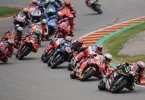Developing elite hitting power is essential for athletes across multiple sports, from baseball and golf to boxing and football. The ability to generate force efficiently and translate it into explosive power can be the difference between a game-winning strike and a missed opportunity. Achieving peak hitting power isn’t just about raw strength—it’s about technique, biomechanics, and strategic training.
The Science Behind Hitting Power
Hitting power isn’t just about brute force; it’s a combination of strength, speed, and coordination. Understanding the mechanics of a powerful hit can help athletes optimize their training and performance.
Every powerful hit starts from the ground up. Whether swinging a bat, throwing a punch, or kicking a ball, an athlete’s ability to generate force begins with lower-body engagement. This energy then transfers through the core and into the upper body, allowing for maximum impact.
Generating Explosive Force Through Proper Mechanics
Developing hitting power requires refining movement patterns and perfecting biomechanics. Efficient energy transfer ensures that no power is wasted, allowing for maximum output with minimal effort.
Lower-Body Engagement: The Foundation of Power
The legs are the primary drivers of explosive force. Strengthening the glutes, quads, and hamstrings enables an athlete to push off the ground and generate a solid base for power production. Movements like squats, deadlifts, and plyometrics help build the strength and explosiveness needed for optimal hitting power.
A solid stance and strong foundation ensure balance, which is crucial when transferring energy from the legs through the upper body. Without stability, even the most powerful muscles won’t be able to effectively translate force into the hit.
Core Strength: The Key to Rotational Power
The core is the bridge between the lower and upper body. Without a strong core, the energy generated from the legs cannot be effectively transferred into the arms and hands, where the final impact occurs.
Optimizing Rotational Strength for Maximum Impact
Rotation is the key to producing high-impact hits. Whether swinging a bat, throwing a punch, or striking a ball, rotational strength allows for full-body engagement in each motion.
Developing Core Stability and Mobility
A powerful hit is driven by core stability. Strengthening the abdominals, obliques, and lower back enhances an athlete’s ability to control and generate force through rotation. Exercises such as Russian twists, medicine ball throws, and rotational planks are essential for improving core power.
Beyond strength, mobility is crucial. A flexible and mobile core allows for a full range of motion, ensuring that every hit is executed with maximum efficiency. Limited mobility leads to restricted movement, reducing the effectiveness of power transfer.
Upper-Body Strength: The Final Link in the Power Chain
The upper body delivers the final force in any hit. While leg strength and core stability create the foundation, the arms, shoulders, and chest provide the finishing power.
Refining Upper-Body Strength for Explosive Hits
Strong arms and shoulders are essential for channeling the energy generated from the lower body and core into the final impact. Developing the right muscle groups ensures maximum velocity and control.
Enhancing Shoulder and Arm Strength
The shoulders play a crucial role in stabilizing and guiding movement. Strengthening the deltoids, triceps, and forearms allows for a more controlled and powerful follow-through in any hit. Targeted exercises like overhead presses, push-ups, and resistance band training enhance shoulder endurance and prevent injury.
Hand grip strength is another overlooked component of hitting power. Whether gripping a bat, a golf club, or an opponent, a firm and controlled grip ensures that no energy is lost in the final moment of impact.
Speed and Agility: The X-Factor in Power Development
While strength forms the foundation of hitting power, speed and agility determine how efficiently that power is executed. An athlete who can quickly load and release energy will always outperform one who relies solely on strength.
Training for Faster Reaction Time and Precision
Explosive power depends on the ability to react and execute a movement in milliseconds. Speed training enhances an athlete’s ability to generate force more efficiently, increasing overall hitting power.
Developing Quick-Twitch Muscle Fibers
Fast-twitch muscle fibers are responsible for quick, explosive movements. Strengthening these fibers through sprinting, plyometrics, and resistance training ensures that an athlete can generate maximum power in minimal time.
Mental Toughness: The Hidden Element of Power
Physical strength is only part of the equation. Mental resilience and focus play a significant role in executing a powerful hit under pressure.
Enhancing Focus and Confidence for Game-Changing Performance
A strong mindset separates elite athletes from the competition. Confidence in one’s abilities, combined with mental discipline, ensures that every hit is executed with precision.
Building Mental Endurance and Competitive Edge
Visualization and mental rehearsal techniques help athletes prepare for high-pressure situations. Training the mind to stay composed and execute movements with precision enhances overall performance.
Conclusion: The Path to Unstoppable Hitting Power
Hitting power isn’t just about lifting heavier weights or swinging harder—it’s about refining technique, optimizing biomechanics, and developing speed and mental resilience. By focusing on lower-body strength, core stability, upper-body power, and reaction speed, athletes can unlock their full potential.
The journey to superior hitting power requires dedication, strategic training, and an unyielding mindset. Those who commit to mastering the fundamentals will always have the edge when it matters most.







